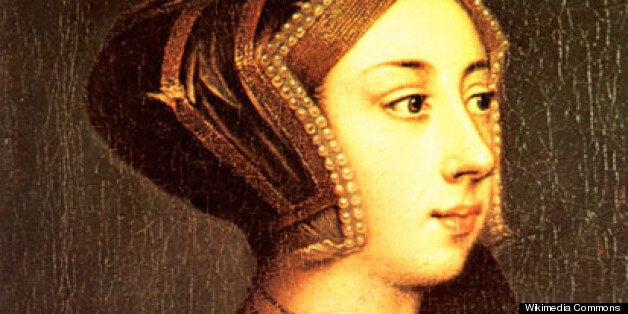
Anne Boleyn. There are few famous people about whom we have imagined so much, yet know so little. She wasn't royalty, so her childhood wasn't chronicled. Her teenage years with "the French" inspired salacious rumor among her political enemies and have fed the imaginations of novelists, but the reality is that we know next to nothing about what she said and did at Francis I's court. It is amply chronicled how Henry VIII pursued her for seven years, splitting his kingdom into bloody halves while he penned ardent love letters and tried to convince an obstinate Catholic hierarchy that his first marriage was a sin against God. But we don't know what she felt and thought about her royal courtier, for we don't have her side of the correspondence.
From the moment she entered Henry's life until well after the French executioner's sword ended her own, Anne Boleyn's behavior, personality and character were chewed over by the tongues and pens of political enemies, who saw her as a usurper of Katherine's throne and destroyer of the True Faith. Their later influence on historians has been nothing short of astounding--and greatly aided by the fact that Henry, eager to forget his second wife and begin anew with his third, tried to erase Anne into historical oblivion: destroyed her portraits, her letters, removed her emblems from the ceilings and entrances of royal residences.
History has left us virtually nothing that is indisputably in Anne's own words, save a handful of letters, most of them inconsequential, and Constable Kingston's record of the often odd comments she made in the Tower of London while awaiting her death. Her less fragmentary, straightforward statements--her speeches at her trial and at the scaffold--were recorded by onlookers, but the most interesting window into her ideas and spirit, a "last letter" to Henry, presumably sent via Cromwell, has been disputed as authentic. We aren't even certain of what she looked like. The mythology, and many modern depictions, have her raven-haired; yet the few portraits that are likely to be based on originals show her hair as auburn.
Henry's attempt to erase Anne from history is almost laughably a failure. She is probably his most famous wife. Yet in many ways, the real Anne Boleyn is a missing person. The paucity of reliable information has not prevented us, however, from creating elaborate narratives about her life and death, many of which have become enshrined as "history"--although in fact they are much closer to soap opera: long suffering, postmenopausal wife; an unfaithful husband and a clandestine affair with a younger, sexier woman; a moment of glory for the mistress; then lust turned to loathing as the cycle comes full circle. Protestant rehabilitators of Anne's image, more conscientious historians, and feminist chroniclers of women's history have tried to revise the same-old script. But somehow, the mythology endures.
Susan Bordo is the author of the new book The Creation of Anne Boleyn: A New Look at England's Most Notorious Queen.